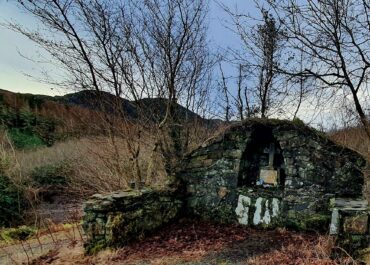Ritual site - holy well, Oirear Dhumhaí Mór, Co. Donegal
Halfway down a cliff face at Murroe, south of Dunfanaghy, a natural spring emerges from the living rock to create St. Finan's Well.
Ritual site - holy well, Oirear Dhumhaí Mór, Co. Donegal
This sacred site forms where water continuously drips onto a rocky shelf before cascading down to the beach below, creating what locals have long called Eas Fionnain, or Finan’s Cascade. The well has drawn pilgrims for centuries, who come to perform stations on the first Monday of every quarter and on 15 August, completing ten rounds of prayer at this dramatic coastal location.
The site’s origins are steeped in legend, with the medieval Life of St. Columba claiming that Columcille himself caused water to spring from the rock to quench St. Finan’s thirst. When the folklorist Ó Muirgheasa documented the well in 1936, he noted it was still very much an active pilgrimage site, known locally as Turus Fionnain. The fresh water flowing directly from the cliff face into the sea created a powerful symbol of spiritual renewal for the faithful who gathered at the water’s edge.
Today, the well remains a remarkable example of how natural features became woven into Ireland’s sacred landscape. The continuous flow of fresh water from solid rock, combined with its precarious position between land and sea, made it an ideal location for ritual observance. The archaeological record confirms centuries of veneration at this site, where the faithful still gather for quarterly pattern days, maintaining traditions that connect modern pilgrims to their medieval predecessors.


